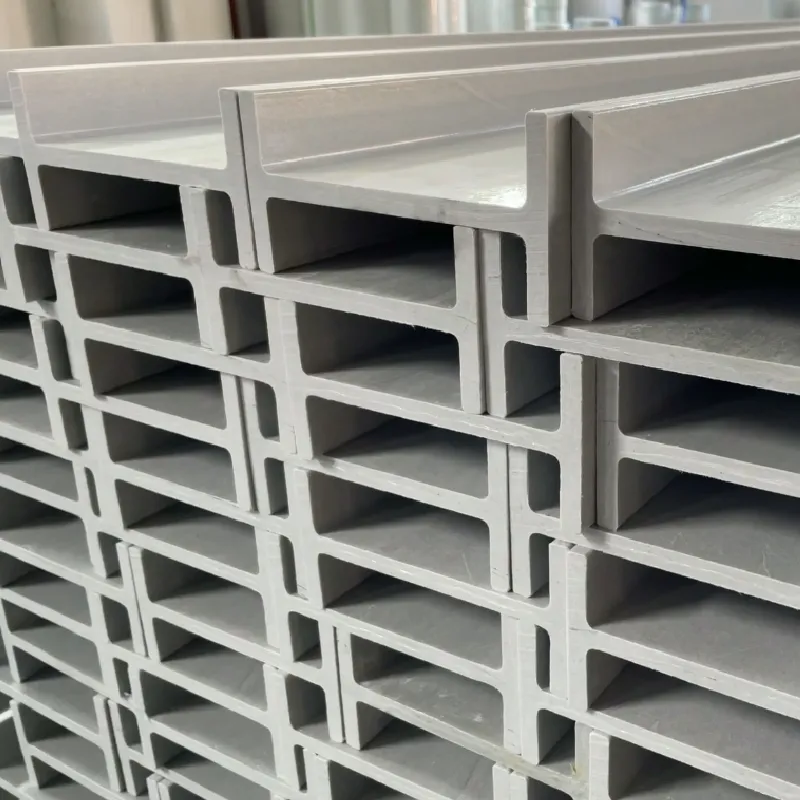loading...
- No. 9, Xingyuan South Street, Dongwaihuan Road, Zaoqiang County, Hengshui, Hebei, China
- admin@zjcomposites.com
- +86 15097380338
- Welcome to visit our website!
Optimal Water Tank Dimensions for GRP Systems to Ensure Efficient Storage Solutions
Understanding GRP Water Tank Sizes A Comprehensive Guide
Glass Reinforced Plastic (GRP) water tanks have gained immense popularity in various sectors due to their durability, low maintenance requirements, and resistance to corrosion. These tanks are ideal for storing water for both domestic and industrial applications. One of the most crucial aspects to consider when selecting a GRP water tank is its size, which can significantly affect efficiency, storage capability, and overall system performance.
Factors to Consider When Choosing GRP Water Tank Sizes
1. Purpose of Storage The first step in determining the appropriate size is to assess the purpose of the water storage. Are you using it for domestic supplies, agricultural applications, or industrial processes? Each use case will dictate different water requirements.
2. Daily Water Demand Calculate the total daily water demand by considering the number of people, appliances, and activities that will require water. For households, this may include drinking, cooking, cleaning, and irrigation. For industries, it may encompass processes like manufacturing, cooling, and sanitation.
3. Future Growth It’s vital to plan for future needs. If you expect an increase in population or expansion of business operations, it’s wise to select a larger tank that can accommodate future growth without the need for immediate replacement.
4. Usage Pattern Analyze the usage pattern of water. If the water usage is consistent throughout the day, a smaller tank may suffice. However, if there are peak usage times (like morning hours in households), larger storage could ensure uninterrupted service.
5. Available Space Assess the available space for tank installation. GRP tanks are versatile in terms of design and can be adapted to fit different spatial constraints. Whether you have small backyard space or expansive industrial land, it's crucial to consider the tank's footprint.
6. Water Quality Needs Different applications require different water quality standards. If the stored water needs to be treated or filtered, ensure the size of the tank allows for effective treatment processes.
grp water tank sizes

Types of GRP Water Tanks and Their Sizes
GRP water tanks come in various shapes and sizes, from small, compact models suitable for residential use to large, custom-designed tanks meant for industrial applications. Common sizes include
- Small Domestic Tanks Often range between 500 to 5,000 liters. These tanks are ideal for homes or small agricultural uses. - Medium Commercial Tanks Typically vary from 5,000 to 20,000 liters, suitable for small to medium enterprises and schools, accommodating moderate water demands.
- Large Industrial Tanks Available in sizes from 20,000 liters up to several million liters, these are designed for heavy industrial applications and large-scale agricultural operations.
Advantages of Choosing the Right Size
Selecting the correct GRP water tank size not only optimizes storage but also enhances operational efficiency. Proper sizing can minimize water wastage, ensure adequate supply during peak times, and reduce the need for frequent refills. Furthermore, appropriately sized tanks can lead to lower operational costs, as they require less energy for pumping and maintaining water levels.
Conclusion
When it comes to GRP water tanks, size matters. A well-sized tank not only meets current water storage needs but also allows for future expansion and growth. By taking into account factors such as purpose, daily demand, future needs, usage patterns, available space, and water quality requirements, you can make an informed decision. Investing in the right size of a GRP water tank will ultimately lead to sustainable water management, ensuring that water resources are effectively utilized and preserved for the future. Remember, a thoughtful approach to tank sizing can enhance both home and industrial water supply systems, making a significant difference in overall efficiency and functionality.
-
The Rise of FRP Profiles: Strong, Lightweight, and Built to LastNewsJul.14,2025
-
SMC Panel Tanks: A Modern Water Storage Solution for All EnvironmentsNewsJul.14,2025
-
GRP Grating: A Modern Solution for Safe and Durable Access SystemsNewsJul.14,2025
-
Galvanized Steel Water Tanks: Durable, Reliable, and Ready for UseNewsJul.14,2025
-
FRP Mini Mesh Grating: The Safer, Smarter Flooring SolutionNewsJul.14,2025
-
Exploring FRP Vessels: Durable Solutions for Modern Fluid HandlingNewsJul.14,2025
-
GRP Structures: The Future of Lightweight, High-Performance EngineeringNewsJun.20,2025
